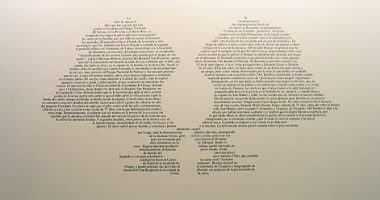
Two women using a switch. Halmstad, 1962 | Järnvägsmuseet | Public Domain
The belief in a simple technological solution to society’s complex problems has taken root. This techno-solutionist trend has proved ineffective in offering solutions, but it continues to shape the way we see the world. The design of digital technologies accordingly suppresses our ability to imagine other realities.
The COVID-19 crisis has exposed a massive social, ecological, political and economic systemic failure. Although the causes and consequences of this crisis are highly complex and far-reaching, we are repeatedly told that they can be solved by yet another app. This technological problem-solving approach is commonly known as techno-solutionism. Techno-solutionism tends to simplify and obfuscate the various concurrent realities that make up and trigger the specific problems it tries to fix; it simply doesn’t cope with problems. It has been proved that techno-solutionism doesn’t work when it comes to fixing highly complex events, such as the current global pandemic,[1] yet it is often actively embraced as the only possible answer to a critical situation. Moreover, while this techno-solutionist approach to dealing with highly complex realities benefits short-term systemic stability by avoiding immediate scenarios of collapse, it fails to take into account the complex series of events that caused the problem in the first place, and therefore risks actually making it worse. I think the following example clearly illustrates this idea.
Igloo White was a US Air Force operation that attempted to automate warfare during the Vietnam War. The operation ran from 1967 to 1972, costing between $6 and $6.7 billion.[2] The Infiltration Surveillance Center (ISC), located at Nakhon Phanom (Thailand) and the largest building in Southeast Asia in 1968, was Igloo White’s state-of-the-art high-tech command centre. ISC intercepted and analysed thousands of sensors dotted along the Ho Chi Minh Trail, the major supply route for North Vietnamese army forces. These covert sensors were designed to detect the presence of humans and vehicles moving along the trail by capturing events such as body heat, motion, sound and even urine scent. When it perceived human activity, the ISC would simply calculate its coordinates and send them to the Air Force patrolling jets, which would then be automatically redirected to the target, and trigger the releasing of bombs. Officially, Igloo White was recognized as a substantially successful operation, claiming to have destroyed 90% of the enemy’s supplies and leaving around 13,000 civilian refugees[3] during the more than four years of electronically controlled warfare. However, the reality in the battlefield refuted these arguments: destroyed equipment was rarely located, and the North Vietnamese soldiers developed counter-tactics to confuse the American sensors, which ended up discharging considerable amounts of explosive material in empty territories.[4] In many ways, Igloo White failed (refused) to acknowledge and integrate the complex series of particularities that were part of the reality of the war it was trying to win, resulting not just in one of the most painful defeats in the history of the US Army, but also leaving behind a significant number of casualties and destroying vast extensions of natural landscape. I believe that Igloo White is a great historical example of how techno-solutionist strategies, as argued by Paul N. Edwards with regard to the Vietnam War, are being “justified in terms of statistics”, although there is “a wide gap between an official discourse of overwhelming success and the pessimistic assessments of independent observers”.[5]

Igloo White operation scheme | CC BY-NC-ND 4.0
The influence of techno-solutionism goes beyond the reduction of social and political agency, and actually erodes our capacity to imagine ourselves as part of a larger ecosystem. Far from being neutral entities, our everyday devices carry and enact a particular worldview that inevitably produces and reproduces certain realities and exclude others. As defined in The Social Construction of Reality, published in 1966, reality is a sophisticated and subjective process affected by multiple contextualized events, such as experience, interactions, language, and personal and social inheritance.[6] Most of our daily transactions are carried out by means of electronic devices integrated within a massive system of interconnected machines. Yet this expansive networked ecosystem is accessible through tangible and “intangible” interfaces, such as screens, keyboards and graphic user interfaces containing interactive elements such as clickable buttons and scrolling events. Ultimately, this amalgam of interfaces, interactive possibilities and limitations is largely mediating (and prescribing) our relationship with the world and deeply influencing the construction of our reality. According to a recent study, in 2020 a citizen spent an average of 3.1 hours using apps on their smartphone[7] and about 7 hours in front of a screen every day.[8] The design of any object embodies the social values and interests that respond to a specific ideology: that of the human group that has created it along with its socio-economic context.[9] Most of our everyday digital technologies are designed and developed by a few (but affect the many) in the heart of Silicon Valley, the cradle of techno-patriarchal capitalism. A system is designed for the purpose of controlling every process that affects it to obtain a desired output (although the system may transform those external processes, sometimes in unpredictable ways). In this sense, most of the devices, digital platforms and apps that we use in our everyday life offer little to no room for negotiation, thereby removing the possibility of modifying their systems by ignoring the multiplicity of sensitivities that are part of them (i.e., the users, nature), which dramatically dissolves their agencies to imagine alternative modes of being in the world. I believe that this reduction of experiences and worldviews reproduced by our technologies comes with dramatic consequences: as our conception of reality becomes increasingly detached from its physical context (and condition), our imagination is more and more homogenized, and our capacity coherently to respond to (inhabit) our life-giving ecosystems is progressively depleted.
But which companies and current narratives are defining, designing, developing, producing, implementing and activating techno-reductionist ideology at a global scale?
“Great Data. Great Technology. Great Results” (Alliant); “Unbundled Technology” (Lotame); “When Experience Matters For Brands For People For Good” (Acxiom); “Personalize each customer’s journey with performance transparency” (Epsilon); “Symphony Segmentation Scales Personalization” (AnalyticsIQ); “MEASUREMENT IS TREASUREMENT” (4Info); “We Translate Customer Behavior Into Financial Opportunities” (Cignifi); “The power to predict” (Rocket Fuel); “Our data helps you know your customers like you know your friends” (Woveon); “TRUTH IN DATA. PROOF IN PERFORMANCE.” (Merkle Inc.); “PRIVACY & CIVIL LIBERTIES ENGINEERING” (Palantir); “Making measurement make sense” (Comscore); “Get inside the mind of your customer” (GFK); “A global data fusion enterprise applying ingenuity for the wellbeing of cities, citizens and corporations” (Sensen networks); “EXPERIENCE IS EVERYTHING” (Ansira).
This collection of impenetrable jargon is taken from Ultimate Solvers,[10] a piece I launched in July 2020, bringing together a series of slogans, brand identities and the supporting graphic materials used by some of the main tech corporations that prescribe technological fixes to announce their services. Interestingly, these companies tend to use a rather precise language to define what they actually do in a very ambiguous way. These corporations do, however, understand precisely how to benefit from the realities that their technologies will create and extract from. One can’t help but wonder what the long-term implications will be of solving highly complex systemic problems with reductionist techno-solutions. The future doesn’t look bright.
Originally published as part of SYSTEMS, Science Gallery at Trinity College Dublin.
[1] Morozov, Evgeny (2020). “The tech ‘solutions’ for coronavirus take the surveillance state to the next level”, The Guardian, 15.04.2020.
[2] Wikipedia (2020). “Operation Igloo White”, last modified 1 June.
[3] Edwards, Paul N. (1996). The Closed World Computers and the Politics of Discourse in Cold War America. Cambridge, MA: The MIT Press.
[4] Edwards, Paul N. (1996). op. cit.
[5] Edwards, Paul N. (1996). op. cit.
[6] Berger, Peter L., Luckmann, Thomas (1966). The Social Construction of Reality. New York, NY: Doubleday.
[7] 2020 Mobile App Evolution Report Overview. App Annie, San Francisco, CA: 2020.
[8] Screen Time: UK vs US vs The Rest of The World Compared. Business Fibre, UK: 2019.
[9] Feenberg, Adam (2002). Transforming Technology: A Critical Theory Revisited. New York, NY: Oxford University Press.
[10] Moll, Joana (2020). Ultimate Solvers, 7 July 2020.





Leave a comment